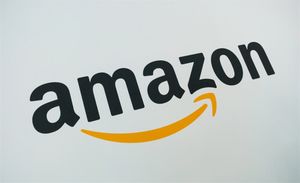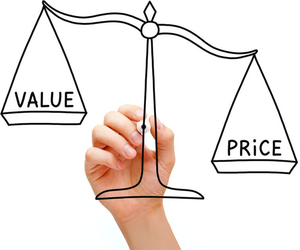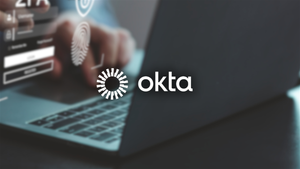New Zip Back-to-School Survey reveals 60% of families anticipate higher spending this year compared to 2024, with 74% of parents feeling pressure to buy specific items for children to “fit in”
Zip (ASX: ZIP), the digital financial services company offering innovative, people-centered products, today released the findings from its 2025 Back-to-School Spending Survey, highlighting how parents are feeling about back-to-school shopping amid ongoing economic shifts and the weight of societal pressures to “fit in.”
Survey results represent responses from over 6,000 U.S. parents between June 15, 2025–July 3, 2025, and feature insights on expected budgets, specific needs, and parental sentiment around back-to-school shopping in 2025.
Key trends from the 2025 Back-to-School Report:
Drop-off drip is real: Parents are dressing up for school drop-off – and buying Stanley cups to fit in.
-
The school drop-off line has evolved into a social scene where parents feel pressure to look their best and carry the right accessories. This phenomenon extends beyond personal appearance to what parents put on their children. The pressure is so significant that parents are making specific purchases just to navigate the social dynamics of the school pick-up line.
- Nearly half (48%) say they intentionally dress up for drop-off, and another 18% do so if they believe teachers will be present + over half (55%) have purchased specific items just to fit in.
- Two-thirds (67%) say they believe branded items on their child help themselves fit in at drop-off + 58% believe wearing Lululemon or Alo will help them fit in.
Back-to-school season isn’t just expensive. Most parents say back-to-school shopping leaves them feeling guilty and overwhelmed.
-
Back-to-school shopping weighs heavily on parents' minds and wallets. The financial strain goes beyond simple budgeting concerns and taps into deeper anxieties about their children's social acceptance and their own ability to provide what's expected. This creates a perfect storm of financial stress and parental guilt that makes the annual ritual particularly challenging.
- Over one-third of parents (38%) are stressed about affording back-to-school items + 74% feel pressure to purchase specific items for their children to fit in.
Parents are using back-to-school shopping as a secret self-care moment.
-
What’s intended to be dutiful shopping for children's school needs now often represents an opportunity for retail therapy where parents justify personal purchases under the guise of necessary back-to-school trips. For many, it's become an anticipated reward system that makes the stressful and expensive shopping season more bearable.
- Nearly 2 in 3 parents (64%) admit to impulse shopping during back-to-school shopping; 16% even consider it their reward and always do so.
When it comes to back-to-school expenses, BNPL offers parents an additional option for affording necessary items from tech to clothing.
-
Buy Now, Pay Later services have become a crucial financial tool for parents navigating expensive back-to-school seasons. Rather than simply being a convenience, BNPL has evolved into a necessity that enables purchases that might otherwise be impossible. For many families, it's become the difference between being able to afford back-to-school essentials or going without.
- 71% of parents said they would not have been able to complete their back-to-school shopping without BNPL.
- Within that group, 17% admitted they would have gone without key items, and another 10% would have delayed buying necessary items.
Elementary and college kids have the most similar back-to-school budgets.
-
Despite being on opposite sides of the educational spectrum, these two age groups have the most budgeting overlap when it comes to what they need for back-to-school. From laptops to writing supplies, turns out starting kindergarten is a lot like starting college.
- College parents lead in tech buys with nearly half of their budgets (46%) going towards items like new laptops, but surprisingly, it’s elementary school parents who come in second with over a third of their budgets (39%) allocated to the same items.
- College and kindergarten lead in budgeting for boarding materials with 37% and 25% of their respective budgets allocated to needs like bed sheets and storage bins.
- Budget allocation for writing supplies is roughly equal for elementary (71%) and college (72%) students with both being 10+ points less than high school and middle school age groups.
Spending is anticipated to be higher this year compared to 2024.
-
Amid economic and educational shifts this year, parents are prepared to face a higher cost for school supplies and back-to-school necessities. The older the kids and the bigger the family, the less confident parents feel about being able to afford back-to-school expenses. Many anticipate spending more than they initially budget for with some planning to forgo the budget altogether and pay for things as they come up.
- On average, families are spending $466 for back-to-school in 2025.
- 60% anticipate higher spending for back-to-school this year over last year.
- Only 22% of parents stuck to their budget for back-to-school shopping, compared to 36% who admitted to spending more than they allotted.
“Back to school can be a stressful time for parents and students alike. It’s not just students feeling the pressure of returning to the classroom. Parents also face the challenge of balancing their desire to provide for their children and meeting societal expectations with today’s financial realities,” said Joe Heck, U.S. CEO of Zip. “At Zip, our focus is on making it possible for people to make the purchases that matter most to them, especially during a traditionally overwhelming time.”
About Zip:
Zip Co Limited (ACN 139 546 428) (ASX: ZIP) is a digital financial services company, offering innovative and people-centred products. Operating in two core markets - Australia and New Zealand (ANZ) and the United States (US), Zip offers access to point-of-sale credit and digital payment services, connecting millions of customers with its global network of tens of thousands of merchants.
Founded in Australia in 2013, Zip provides fair, flexible, and transparent payment options, helping customers to take control of their financial future and helping merchants to grow their businesses.
For more information, visit: www.zip.co Loans through Zip are originated by WebBank.
View source version on businesswire.com: https://www.businesswire.com/news/home/20250827484618/en/
Contacts
Zip
press@zip.co






